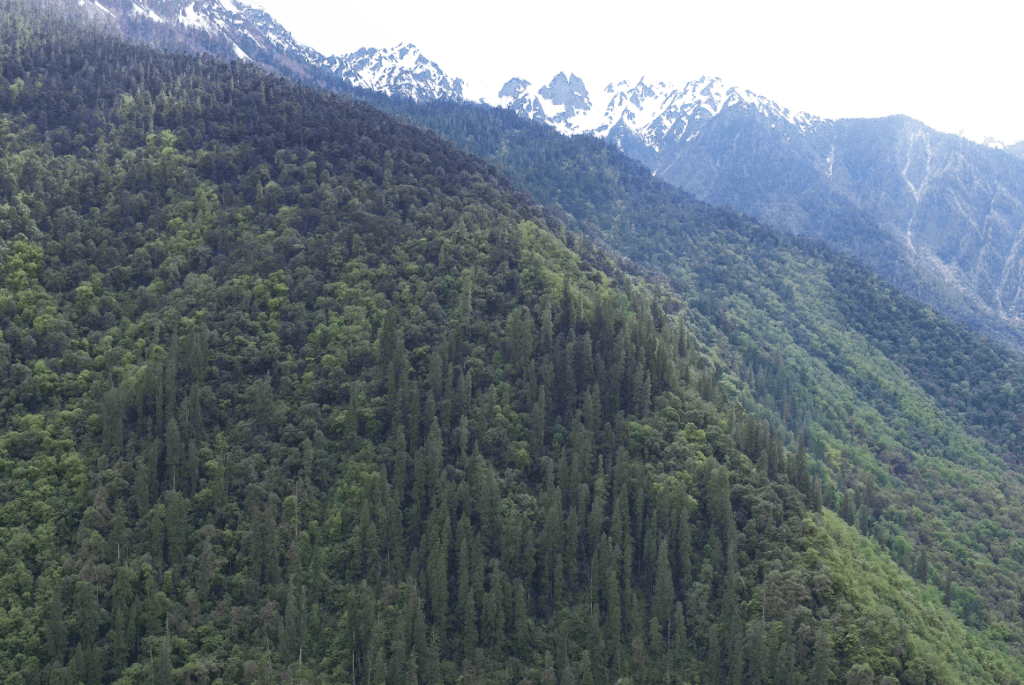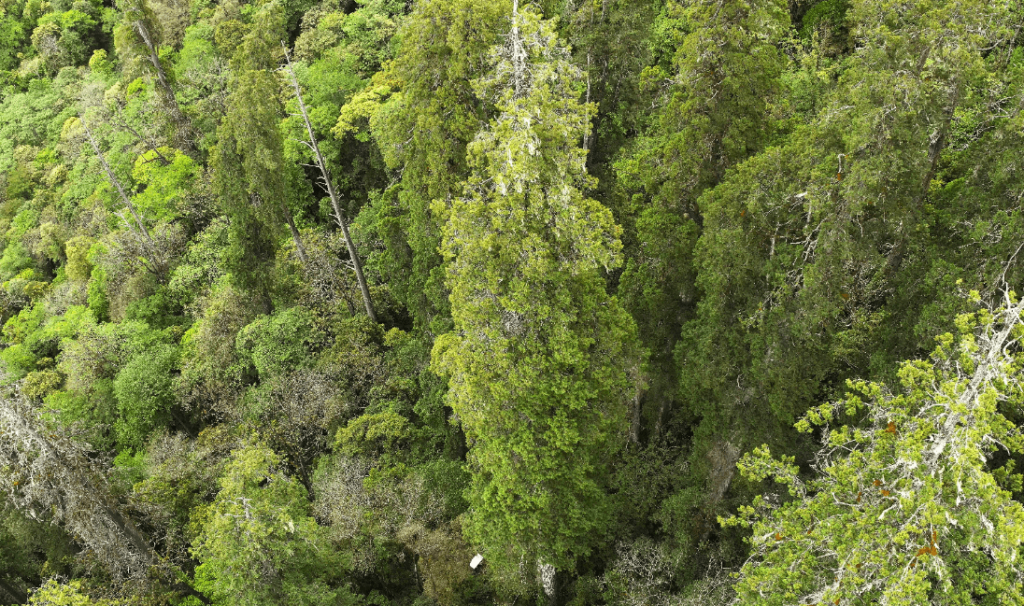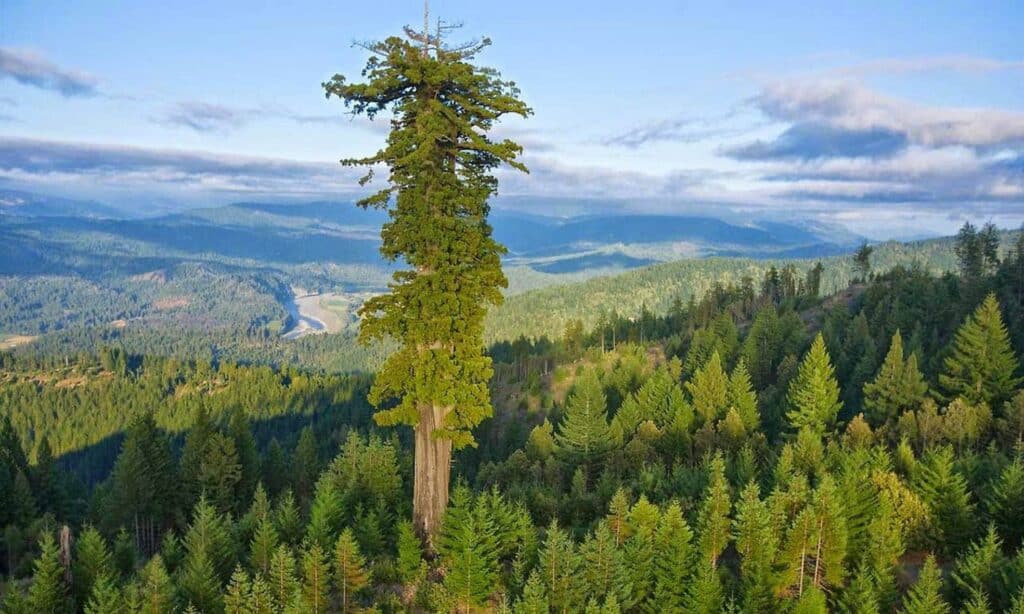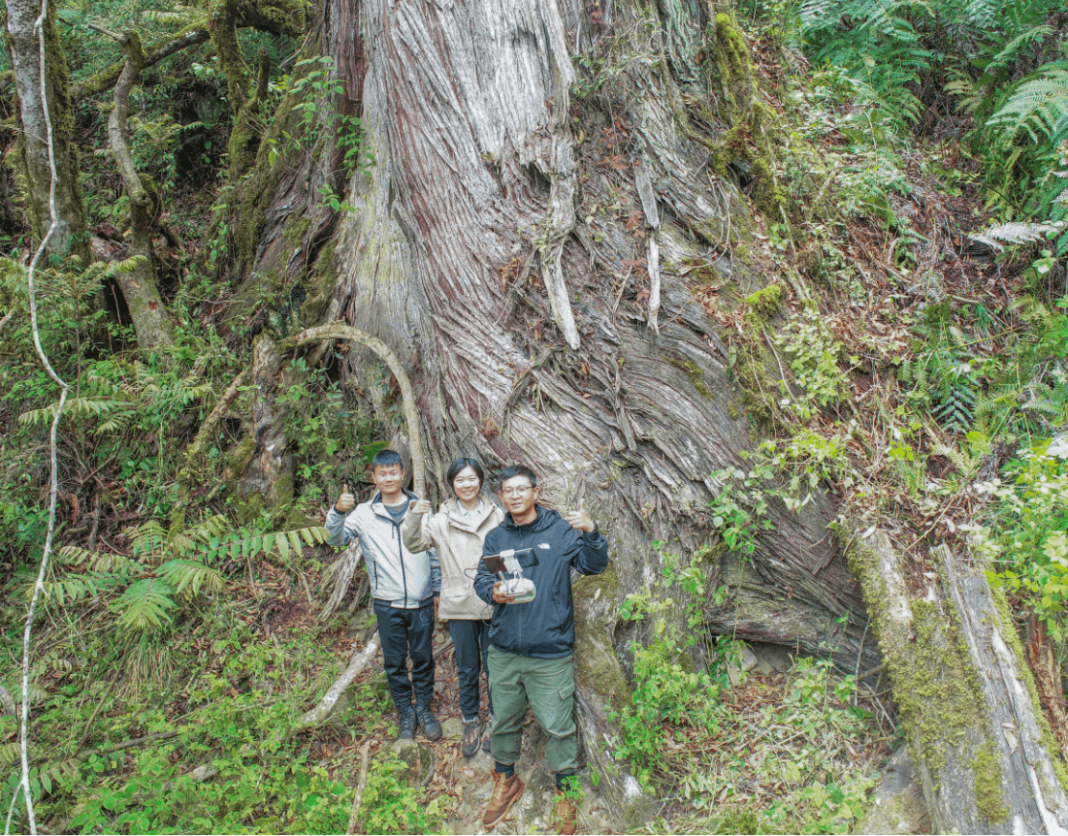In a major ecological discovery, researchers have discovered Asia’s tallest tree – a 335-foot (or 102 metres) cypress tree found in Tarlung Tsangpo’s Grand Canyon, which has a maximum depth of 19,714 feet (or 6,010 metres).
The tree has a girth of 9.2 feet (or 2.9 metres) and was discovered in May 2023 in Bome County’s Nyingchi city in Tibet, according to researchers from the Chinese Academy of Sciences (CAS).
The exact species of the tree remains unclear, but China’s state media hinted it could be Himalayan cypress (Cupressus torulosa) or a Tibetan cypress (Cupressus gigantea).

Researchers: Taller trees yet to be discovered
Before the discovery, Asia’s tallest tree was reportedly a 331-foot (just under 100 metres) yellow meranti (Shorea faguetiana) located in the Danum Valley Conservation Area in Sabah, Malaysia, in April 2019.
In 2016, the previous record holder measured a 293.6-foot (or 90-metre) yellow meranti in Sabah’s Maliau Basin Conservation Area. Before that, the record came from a yellow meranti (Shorea faguetiana) in Sabah’s Tawau Hills National Park.
For the researchers seeking out the world’s tallest trees, it’s not the size that excites them most. “It’s the science telling us these trees do exist, they are reaching heights we have perhaps never anticipated and there will be other tall trees out there that haven’t been discovered yet,” Doreen Boyd who led the 2019 study, said.
“It tells us that we do need to protect these trees.”
Giant trees are highly valuable for ecology and biodiversity
According to Live Science, the discovery came as part of an ongoing conservation effort by Peking University to catalogue the various trees in the Tibet Autonomous Region, particularly in the area near Nyingchi City.
In May 2022, the team found a 272-foot (or 83-metre) fir tree in southwest China, which they initially thought was the largest tree in China. They also uncovered a 252-foot (or 77-metre) tree in Medog County in April 2022.
This region is increasingly affected by global climate change and development, prompting researchers to investigate the area’s ecological diversity to help with environmental protection efforts.
The researchers used drones, lasers, and radar equipment to map out the area’s trees and pinpoint their heights from the ground, leading to the discovery.
To confirm that it is indeed the tallest tree in Asia, the team created a 3D cypress model using a 3D laser scanner and lidar technology, which provides distance measurements via light beams.
- Download the 3D image here.
The tree is also notable for its supporting roots, which are not buried completely underground, according to Peking University professor Guo Qinghua.
According to the Chinese-state-run Global Times, the tree has a complex system of branches and a vertical structure that creates “ideal microclimates and habitats for some endangered plants and animals,” according to a statement from Peking University.
Giant trees like those in Yarlung Tsangpo Grand Canyon are rare.
They require highly specific conditions to thrive, including suitable soil and climate conditions. They also must avoid being destroyed by various factors, including wind, fire, lightning, or people.
Their existence can also provide significant insight into the health and integrity of the ecosystem they have grown. This is why their conservation is such an important focus for researchers across the globe.

Last month, Wood Central reported on the oldest tree discovered in Chile.
According to Carmen Gloria Rodriguez, an assistant researcher at the dendrochronology and global change laboratory at Austral University, these trees play an important role in understanding ecological change.
“They are like an open book and we are like the readers who read every one of their rings.”
“There are many other reasons that give value and sense to this tree and the need to protect it,” according to Antonio Lara, a researcher at Austral University and Chile’s Centre for Climate Science and Resilience.
“The trees have genes and a very special history because they are symbols of resistance and adaptation. They are nature’s best athletes.”
The world’s tallest tree is in California’s Redwood National Park
The world’s tallest tree is a 381-foot (or 116-metre) coastal redwood (Sequoia sempervirens) located in California’s Redwood National Park.
The tree is estimated to be between 600 and 800 years old and is nicknamed Hyperion after one of the Titans in Greek mythology.

Since the tree’s discovery in 2006, countless people have visited the Redwood National Park.
Last year, Yahoo reports that the U.S. Park Service had to limit public access to the world’s tallest tree after visitors were found to be climbing and vandalising the tree and its surrounding undergrowth.







